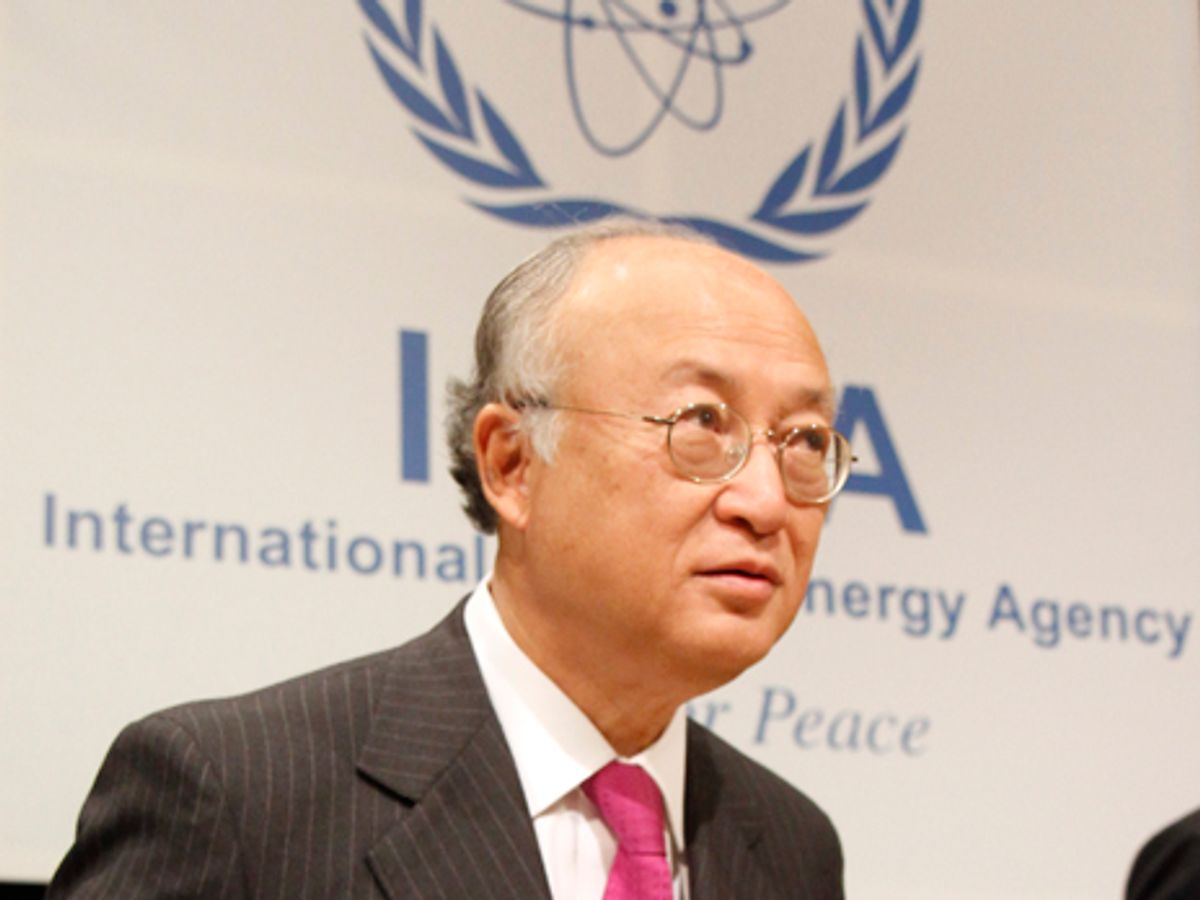Editor's Note: John Boyd is an IEEE Spectrum contributor reporting from Kawasaki, Japan. This is part of IEEE Spectrum's ongoing coverage of Japan's earthquake and nuclear emergency. For more details on how Fukushima Dai-1's nuclear reactors work and what has gone wrong so far, see our explainer and our timeline.
Random safety checks of nuclear power plants is one of a series of proposals the International Atomic Energy Agency (IAEA) put forward at its five-day ministerial-level conference on nuclear safety, which got underway in Vienna on Monday. The high-level meeting of more than 1000 government ministers and officials was called to consider what lessons could be learnt from the Fukushima nuclear power plant accident and the troubles that have resulted in its aftermath.
Yukiya Amano, the agency’s director general, opened the meeting by calling for a report to be drawn up in the next twelve months on how to upgrade safety standards. Putting forward his own recommendations, he said that “countries with nuclear power should agree to systematic, periodic peer reviews by the IAEA. I therefore propose a system based on random selection. The knowledge that any plant could be subject to review would give operators an additional incentive to implement the highest safety standards.”
Amano acknowledged that the Fukushima accident has dealt the worldwide nuclear industry a serious blow. Last month the German government, in a 180-degree turn-around, announced it will abandon nuclear power by 2022. This news was followed by a referendum held in Italy this month that showed over 90 percent of voters opposed the reintroduction of nuclear power, a result that prompted Prime Minister Silvio Berlusconi to say, “We probably have to say goodbye to nuclear energy.”
“Public confidence in the safety of nuclear power has been badly shaken,” admitted Amano. He added, “We need to respond to the public anxiety caused by the accident, while maintaining a firm long-term commitment to continuously improving nuclear safety. Business as usual is not an option.”
After attending the conference on Monday, Banri Kaieda, Japan’s trade and industry minister, told reporters that the Nuclear and Industrial Safety Agency (NISA) could be made an independent body as early as next year, once other government bodies that would be affected by the change have made the necessary preparations. Such a move has been expected after Prime Minister Naoto Kan recently characterized Japan’s energy policy decision makers as “a closed inner-circle of pro-nuclear scientists and bureaucrats.”
Meanwhile the battle to gain control of the troubled Fukushima nuclear plant continues unabated. Testing of a decontamination water treatment system suffered a series of delays earlier in the month. But Tokyo Electric Power Co. (TEPCO) began a full-scale operation last Friday night, only for it to be halted 5 hours later when a cartridge in the ad-hoc system used to soak up cesium was found to have reached its absorption limit. According to a report from NHK, Japan’s national broadcaster, TEPCO had estimated the zeolite-based cartridge would take a month to reach its limit.
A TEPCO official told reporters that water mixed with radioactive sludge and oil had entered the decontamination system and quickly overburdened it. After experimenting with several types of filters, testing began again Tuesday morning, only for it to be halted yet again when a pump shut down automatically, apparently because the water flow was too powerful. After adjusting the flow, testing began again in the afternoon. The company now says it will test the system for two to three days and hopes to begin full scale operations after that.
The company is attempting to decontaminate the water so it can be used to cool the reactors. TEPCO has been injecting water into the three crippled reactors on the site at a rate of some 500 tons daily to keep them from overheating. But much of the water—some of it highly radioactive—is leaking out from damaged parts and is collecting in the basements of the reactor and turbine buildings and in nearby trenches. TEPCO says this water could overflow in about a week once the storage tank it the water is being transferred to is filled. So getting the decontamination system in place is important.
In a rearguard action, TEPCO began reducing the amount of water it is injecting into the reactors on Tuesday and says it is carefully monitoring them for a rise in temperature. It is also considering plans to transfer some of the water into other tanks.




